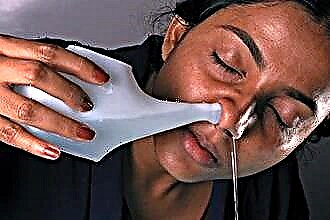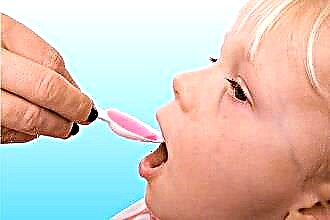The nasopharynx connects the right and left nasal cavities and in this area the main volume of mucus is formed, which then enters the nasal passages. That is why rinsing the nasopharynx is an excellent way to deeply cleanse the nose, which makes it possible to alleviate a person's condition with allergies, ensure accelerated recovery in case of colds and become a good prevention of ARVI. A conversation about how to flush the nasopharynx should begin with a detailed description of the techniques used in this procedure.
Drip wash
 Here, a pipette is used to deliver fluid into the nasal cavity. In order to ensure high-quality lavage of the nasopharynx in this case, it is necessary to blow your nose thoroughly before starting the procedure. This will clear the mucus from the nasal passages and allow drops of solution to enter the nasopharynx unhindered.
Here, a pipette is used to deliver fluid into the nasal cavity. In order to ensure high-quality lavage of the nasopharynx in this case, it is necessary to blow your nose thoroughly before starting the procedure. This will clear the mucus from the nasal passages and allow drops of solution to enter the nasopharynx unhindered.
Important! In young children who still do not know how to blow their nose, you must first liquefy the mucus in the nose and remove it with gentle rotational movements of a dry cotton flagellum.
After the nasal passages have been cleared, flushing is performed in several stages:
- Pour the rinsing solution into the pipette and hold it in your hand.
- Tilt your head back and pinch one nostril with your free hand.
- Insert the tip of the pipette into the open nostril and add 5-8 (up to 10) drops of liquid into it.
- Remove the pipette from the nasal passage, place it on the napkin and pinch the newly instilled nostril.
- The head should still be tilted back - this will allow the solution to drain down the nasal passages directly into the nasopharynx.
- After 1-1.5 minutes, lower your head and open your nostrils. The liquid will start to flow out on its own.
- Clean the nose by blowing it out again - this will remove all the mucus that came from the nasopharynx along with the solution.
- Perform the same manipulations symmetrically for the other nostril.
For an infant, cleaning the nasopharynx in this way should be carried out by laying him on his back. The volume of liquid injected into each of the nostrils should not exceed 4-5 drops. After instillation of the child, you need to turn on his stomach and lower his head, letting the solution flow out. Then you need to clean his nose again with cotton filaments.
Douching
This is a more effective technique that involves  use of a special device for supplying liquid under low pressure. Usually, a rubber syringe bulb or a syringe with a removed needle is used as such a tool. Rinsing the nasopharynx in this case involves the following actions:
use of a special device for supplying liquid under low pressure. Usually, a rubber syringe bulb or a syringe with a removed needle is used as such a tool. Rinsing the nasopharynx in this case involves the following actions:
- Draw enough liquid into the syringe or syringe so that it can be jetted.
- Lower your head downward, tilting it over a sink or container.
- Gently insert the tip of the bulb or syringe into your nostril. The second nostril should not be pinched before this.
- Squeeze the bulb or push the plunger of the syringe to allow the solution to flow into the nasal cavity.
- The liquid should flow freely into the substituted container.
- Repeat the procedure for the other nostril.
Important! You should learn to control the intensity of the fluid supply. If the spray is too strong, it can enter the middle ear and cause inflammation there.
To improve the result of rinsing and free access of the solution into the nasopharyngeal cavity, as in the previous method, it is necessary to clean the nasal passages by carefully blowing out. Usually, in adults, it is possible to efficiently flush the nasopharynx by introducing 4-5 syringes full of 10 ml liquid into each nostril, which for a syringe will be 40-50 ml.
Indian technique
To use it, you need to take a special clay teapot or a device called "Aqua-Maris". This method of rinsing the nasopharynx at home is even more effective than the previous ones. But before starting the procedure, you should still clear the nasal passages of mucus.
- Pour nasopharyngeal lavage liquid into a teapot or Aqua-Maris device.
- Tilt your head down and tilt it to the side so that one nostril is higher than the other.
- Insert the spout of the container with the solution into the "upper"
 nostril and tilt the container so that the solution starts pouring into the nose.
nostril and tilt the container so that the solution starts pouring into the nose. - Hold your breath - then this process will be much more comfortable.
- The liquid will pass through the nasal cavity, enter the nasopharynx, and through it - into the other, "lower" nostril, from which it will begin to pour out, taking with it mucus and other impurities.
- Turn your head to the other side and repeat the same procedure on the other nostril.
Deep rinsing
This technique is quite difficult to master, but, at the same time, it is, perhaps, the most effective. To clear the nasopharynx in this way, you need:
- Pour the rinse solution into a wide, low-rimmed container, such as a shallow bowl.
- Take a second container of large enough volume and place it on the table.
- With one hand, clamp the right or left nostril, and with the other, bring the container with the solution to your face.
- Immerse an open nostril in the liquid, positioning yourself so that there is a second, large container under the chin.
- Begin to vigorously draw in the solution of the free nostrils.
- At the same time, the mouth should be kept open - the liquid should flow freely from it, passing through the nasopharynx, and fall into the lower container.
- Repeat the procedure symmetrically for the second nostril.
Features and limitations
For the most successful application of this procedure, you need not only to know how to rinse the nasopharynx, but also for whom this or that method will be most effective.
So, for example, adults and adolescents are suitable for all cleaning options, including the use of a pipette. This technique is the most gentle and can be used in general in any group of patients. But it should be remembered that the amount of rinse solution that gets into the nose is quite small in this case, and it may not penetrate directly into the nasopharynx. This is especially true for adults in whom the size of the nasal cavities is already large enough. Therefore, it is better for them to use douching, the Indian method or deep rinsing.
It is quite difficult for children aged 3 to 12 years to master deep washing, but they can master the Indian technique or douching quite easily. Moreover, if you teach a child such procedures in a playful way, then rinsing the nasopharynx may even like him - he will perceive it as an unusual entertainment.
For babies, neither deep rinsing nor the Indian method of cleaning the nasopharynx is applicable. Parents can rinse the child with a solution with a pear or syringe, but for this they need to learn very carefully to measure the force of compression of the syringe or pressure on the piston. Too much fluid flow can not only enter the inner ear with the development of otitis media, but also damage the delicate mucous membrane of the child's nasal passages by itself.
Important! After rinsing the nasopharynx, it should be at room temperature for at least 1 hour. This will help prevent sinus congestion.
Rinsing the nasopharynx can be done a maximum of 2 times a day for no more than 1 week. This is explained by the fact that a certain microflora is present on its mucous membrane, which should be normal there.
Intensive, too frequent and / or too long cleaning procedures lead to the fact that the microflora is simply washed away.
And this, in turn, allows pathogens to freely multiply on mucous membranes.Therefore, at least two-week breaks between courses of lavage of the nasopharynx are necessary, first of all, so that the normal microflora has time to recover.

 nostril and tilt the container so that the solution starts pouring into the nose.
nostril and tilt the container so that the solution starts pouring into the nose.

